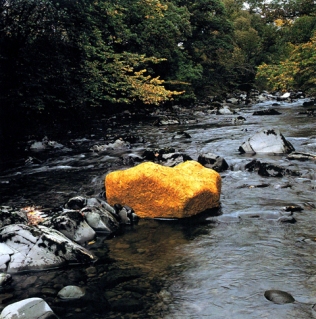It is funny how naming things can impose a different shade of meaning on how we perceive them. As a native French speaker, I often lament the neutrality of the English language. While, I admit, a gender-neutral language is often more practical and better suited to our modern day society, I find it at times less colourful and poetic. For me it is natural that flowers and cars are feminine, and trees and trucks masculine. And of course everybody will agree that the sun is masculine and the moon, feminine.
In the college where I teach Metal Techniques, our classrooms are called labs – a term I wasn’t comfortable with at first, maybe because it is a somewhat painful reminder of my “bad lab days” in high school when I never amounted to more than a “C” student in chemistry and physics. Up till now I was more partial to “workshop” or “shop”, but after much pondering, I am reconsidering. The word “shop” conjures up a time not so long ago when most goldsmiths were men. When I think “workshop”, I see cute elves working frantically at their benches while Christmas music is playing in the background. None of that is really a true reflection of who I am and what I do professionally.
In fact a science lab and a goldsmith’s studio have quite a bit in common, and not just their physical attributes – the workbench or countertop, lots of cabinets and drawers, and a journal or notebook to keep track of the results of the experiments. In my previous post I expressed the need to explore and ask questions in order to reawaken my creativity. In that spirit, seeing my studio as a lab, a place for investigating and exploring, will certainly give me the freedom I need to do just that.
Ultimately, it comes down to the birds and the bees (No, I don’t mean that!). A goldsmith in her “lab” is more inclined to look at other forms of artistic expression, look at other disciplines and see how they might intersect with metalwork and jewellery; play with different materials, draw on a wider range of techniques and try new ones, explore new technologies, try a different hat on, collaborate AND allow for cross-pollination. I will leave you with a quote by Andy Goldsworthy: “Every so often I feel as birds must before their first migration – a gut instinct that something is wrong where they are, a strong sense that they must now go where they have never been before.”





Like you, Dominique, I like the word lab, which I remembered comes from Medieval Latin ‘laboratorium,’ interestingly not feminine of masculine, but neuter. The medieval connection suggests alchemy, magic and wondrous spirit struggles. This sounds like jewelry to me!
Thanks for another fine post.
Bob
Bob, I am so glad you pointed out the connection with alchemy. I wasn’t thinking about it, but of course that’s exactly what is happening in the “lab”, and it is at the heart of what we all do, goldsmiths, poets, all of us artists – transforming the ordinary.
Thank you for your comments!
What an interesting comparison, Dominique. I felt so similar as you said you did, during science lab classes back in my high school days. However – I never would have realized the comparison of how much a chemistry or bio lab could be reflective of a metalsmithing environment, in our case, with the benches and “soldering stations” all neatly lined up/situated. As a young girl – I would feel such a sense of fear or uneasiness when I walked into the science lab classroom; it was because I did not know what “experiments” awaited me for that day in class. Well – the same could indeed be said for a metals’ lab! As we continue to challenge ourselves as artists, craftspeople or teachers – it’s amazing how much experimentation we actually do to find our next direction or significant paths. Thanks again for sharing such a challenging and provoking perspective of you and your teaching/work, Dominique!
Fear and uneasiness yes, that’s it – when instead it should have been a sense of expectation and wonder! Also, it is true that for most of us artists/craftspeople our work in the “lab” is solitary, and maybe scary sometimes. But now, thankfully, it is easier than before to share our experiences – just like we are doing in our blogs. Thank you Patricia, I always enjoy your visits!
I enjoyed the quote ” a strong sense that they must now go…”, have always felt that way myself. It’s a perfect way to describe the search for new and original ideas. Also to “go search”, leave the lab and explore the world outside.
Thanks for your comments, Eva. By the way, your blog is a wonderful example of how one can go out there, with a curious and open mind, and search for ideas – clouds, ropes, flowers, colours, textures, etc. I always enjoy discovering what tickles your imagination.